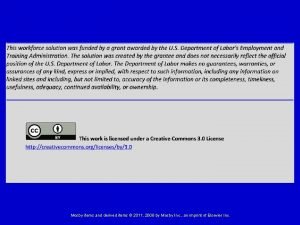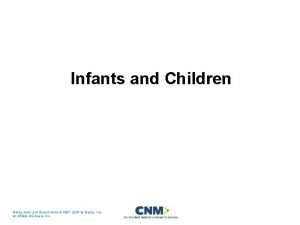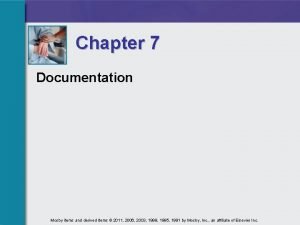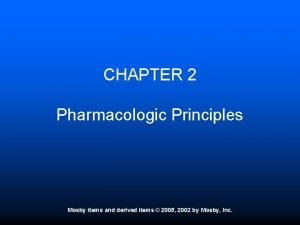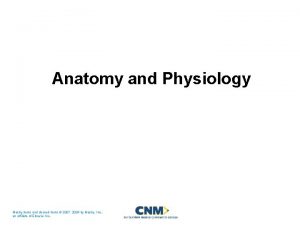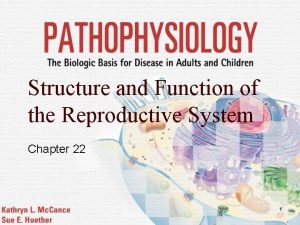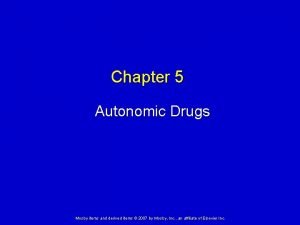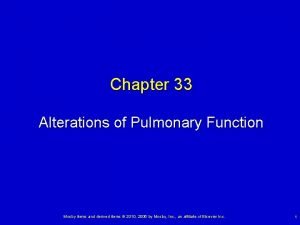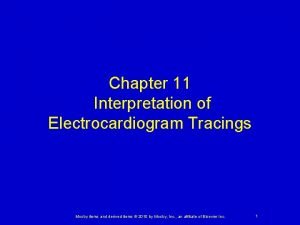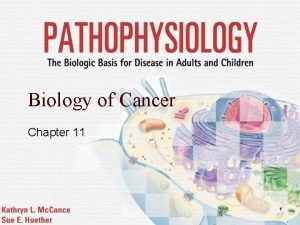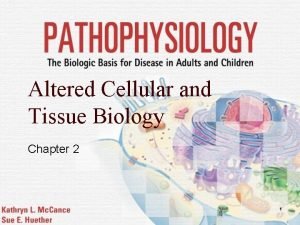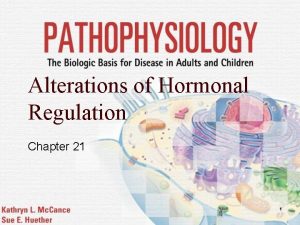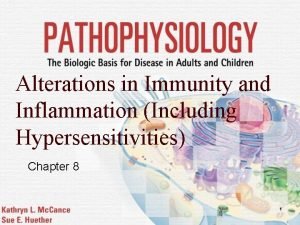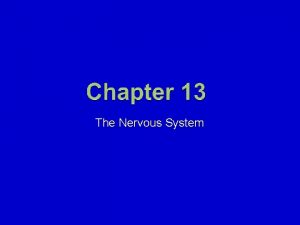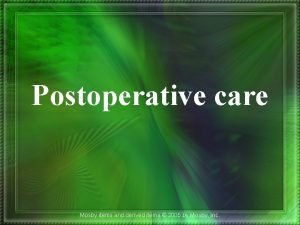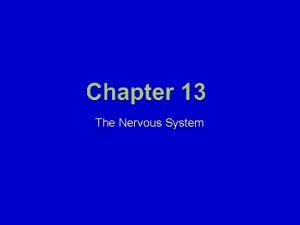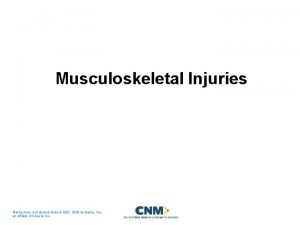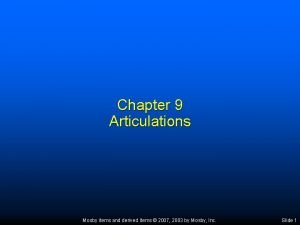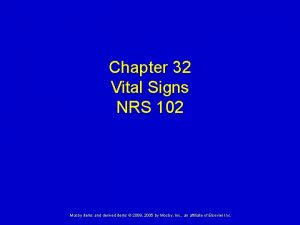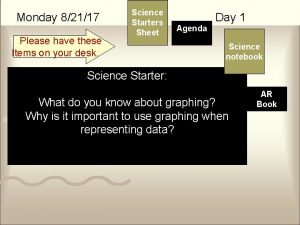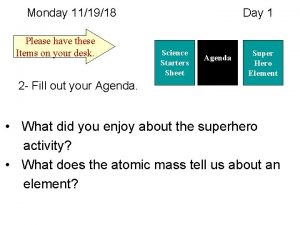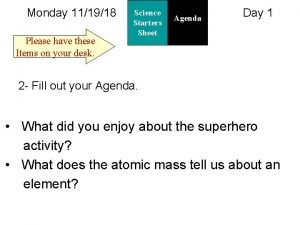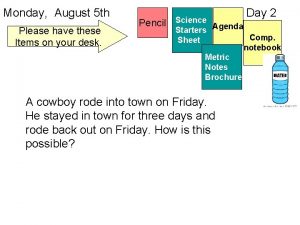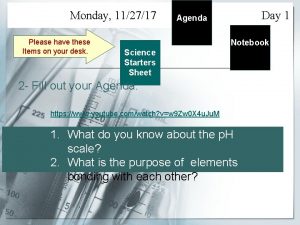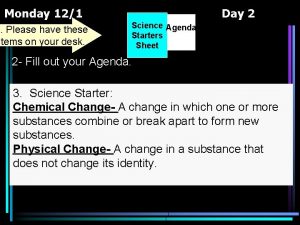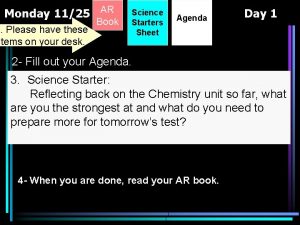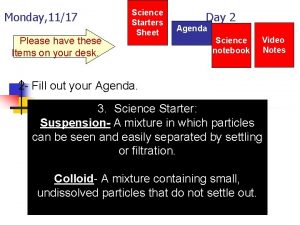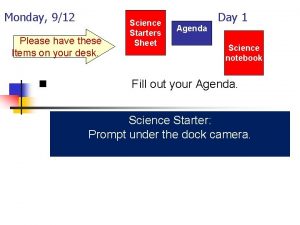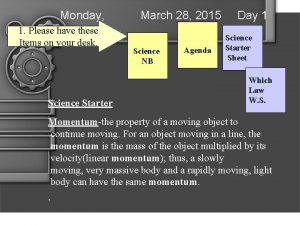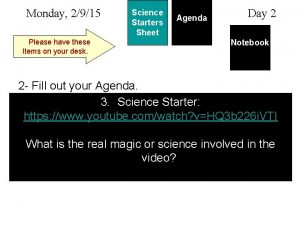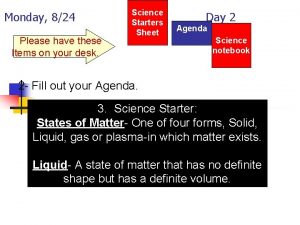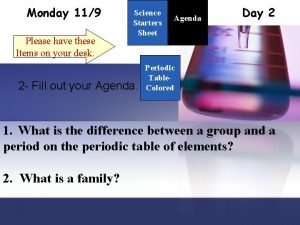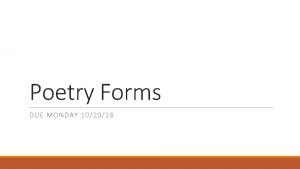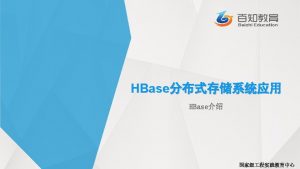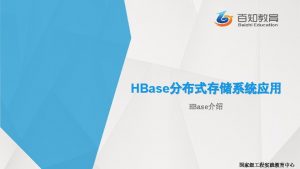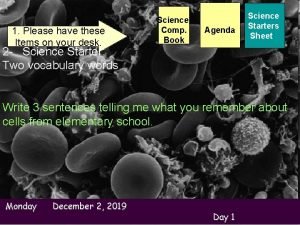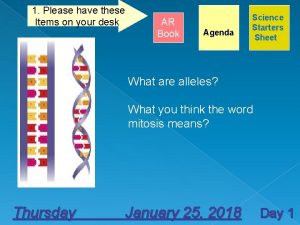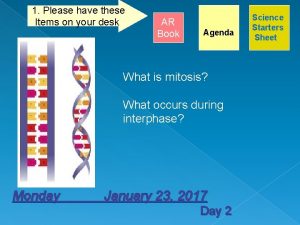Monday 102918 1 Please have these Items on























- Slides: 23

Monday, 10/29/18 1. Please have these Items on your desk. Day 1 Science Starter Agenda Science notebook Fill out your Agenda. 1. Science Starter: What is matter made up of? 2. What is the real name of the parts of matter? 3. What do you know about the periodic table? Science Fair Research Science Fair Bibliography Text Book Reading

Einstein's Big Idea movie -Your notes should be taped to the last page of your notebook. n You. Tube link to the movie n https: //www. youtube. com/watch? v=b. TO 2 M-0 Ti 1 k n

Table of Contents Date 10/29 Assignment Periodic Table Notes Page 59

Sciencequeen. net The Periodic Table How the periodic table is put together

What is the Periodic Table? n It is an organizational system for elements. Picture from www. chem 4 kids. com Sciencequeen. net

Who created it? n n The quest for a systematic arrangement of the elements started with the discovery of individual elements. By 1860 about 60 elements were known and a method was needed for organization. In 1869, Russian chemist Dimitri Mendeleev proposed arranging elements by atomic weights and properties. The table contained gaps but Mendeleev predicted the discovery of new elements.

Mendeleev’s Periodic Table

So how is it arranged? n n The genius of the periodic table “is that it is organized like a big grid. The elements are placed in specific places because of the way they look and act. If you have ever looked at a grid, you know that there are rows (left to right) and columns (up and down). The periodic table has rows and columns, too, and they each mean something different. ” quoted from http: //www. chem 4 kids. com/files/elem_pertable. html

You've got Your Periods. . . n n Even though they skip some squares in between, all of the rows go left to right. When you look at a periodic table, each of the rows is considered to be a different period (Get it? Like PERIODic table. ) quoted from http: //www. chem 4 kids. com/files/elem_pertable. html

Periods = Rows n n In the periodic table, elements have something in common if they are in the same row. All of the elements in a period have the same number of atomic orbitals. Every element in the top row (the first period) has one orbital for its electrons. All of the elements in the second row (the second period) have two orbitals for their electrons. It goes down the periodic table like that. quoted from http: //www. chem 4 kids. com/files/elem_pertable. html

And you got your groups… n n The periodic table has a special name for its columns, too. When a column goes from top to bottom, it's called a group. quoted from http: //www. chem 4 kids. com/files/elem_pertable. ht ml

Groups = Columns n n n The elements in a group have the same number of electrons in their outer orbital. Every element in the first column (group one) has one electron in its outer shell. Every element on the second column (group two) has two electrons in the outer shell. As you keep counting the columns, you'll know how many electrons are in the outer shell. There are some exceptions to the order when you look at the transition elements, you cannot determine how many electrons are in the outer orbit.

What do all the numbers mean ? P=E= Atomic Number From www. science-class. net

Other than periods and groups, the table is divided into families. From www. science-class. net

ALKALI METALS • very reactive metals that do not occur freely in nature • malleable, ductile, good conductors of heat and electricity. • can explode if they are exposed to water From www. science-class. net

ALKLINE EARTH METALS • metals • very reactive • not found free in nature From www. science-class. net

TRANSITION METALS • Groups 3 -12 cannot determine valance electrons by its location. • ductile and malleable, and conduct electricity and heat. • iron, cobalt, and nickel, are the only elements known to produce a magnetic field. From www. science-class. net

RARE EARTH ELEMENTS • Many are man-made • Element 93 and on are man made. From www. science-class. net

OTHER METALS • are ductile and malleable • are solid, have a high density, From www. science-class. net

METALLOIDS • have properties of both metals and nonmetals • some of the metalloids are semiconductors. This means that they can carry an electrical charge under special conditions. This property makes metalloids useful in computers and calculators From www. science-class. net

NON-METALS • not able to conduct electricity or heat very well • very brittle • Do not reflect light. From www. science-class. net

HALOGENS • "halogen" means "salt-former" and compounds containing halogens are called "salts" • exist in all three states of matter From www. science-class. net

NOBLE GASES • do not form compounds easily • Happy/Inert Elements (Full outer shells) From www. science-class. net
 Mosby items and derived items
Mosby items and derived items Mosby items and derived items
Mosby items and derived items Acuity charting forms
Acuity charting forms Lliver
Lliver Mosby
Mosby Reproductive system
Reproductive system Mosby items and derived items
Mosby items and derived items Mosby items and derived items
Mosby items and derived items Autonomic drugs
Autonomic drugs Mosby items and derived items
Mosby items and derived items Mosby items and derived items
Mosby items and derived items Absorption atelectasis
Absorption atelectasis Mosby items and derived items
Mosby items and derived items Mosby items and derived items
Mosby items and derived items Mosby items and derived items
Mosby items and derived items Mosby items and derived items
Mosby items and derived items Mosby items and derived items
Mosby items and derived items Mosby items and derived items
Mosby items and derived items Mosby items and derived items
Mosby items and derived items Mosby items and derived items
Mosby items and derived items Mosby
Mosby Mosby items and derived items
Mosby items and derived items Mosby items and derived items
Mosby items and derived items Mosby items and derived items
Mosby items and derived items
